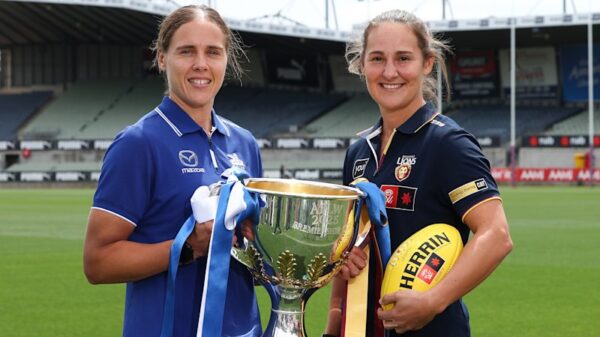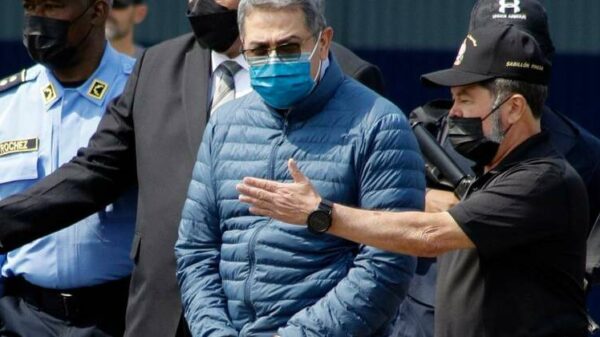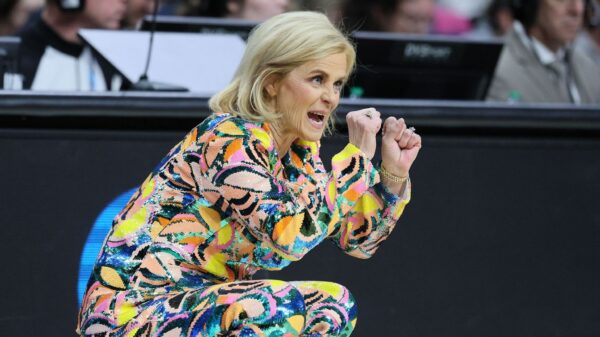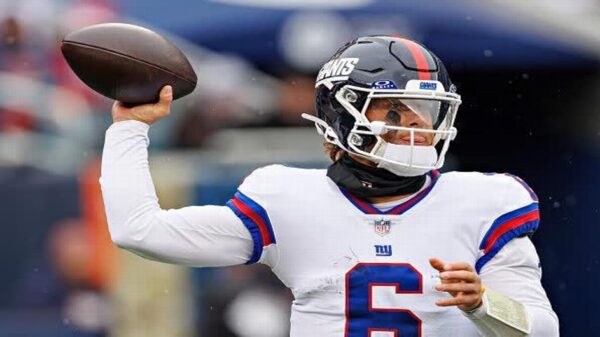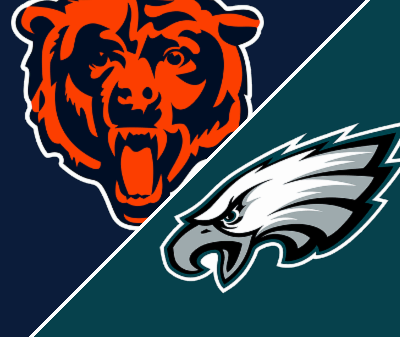World Rugby has decided against closing a loophole that allowed a contested try by the British and Irish Lions during their recent match against the Wallabies in Melbourne. This decision has sparked debate over the potential dangers of head contact and neck injuries, particularly if players replicate the tactic used by Lions hooker Dan Sheehan.
The try occurred in the 16th minute of the second Test at the MCG, where Sheehan executed a tap five metres from the Wallabies’ line, leaping over two defenders in a manner reminiscent of an NFL touchdown. The move drew immediate criticism, especially from Wallabies coach Joe Schmidt, who raised concerns about the safety implications of such tactics.
Under current World Rugby regulations, players are prohibited from jumping over defenders but are permitted to dive in order to score. Schmidt highlighted the risk involved in such a dive, stating, “It’s illegal to jump the tackle, but he dived over. What do we do to stop him scoring, apart from stopping his head?” He emphasized the dilemma faced by players, who find themselves in precarious positions concerning head contact.
Sheehan, however, defended his approach, explaining in an interview with Stan Sport’s Lions Central that his decision was instinctual. “I got absolutely minced trying to go low, so I decided in my own head that I wasn’t going to try that route again,” he said. “I was lucky enough I just slipped over the top of them and got through.”
Referee Andrea Piardi confirmed to Wallabies captain Harry Wilson that Sheehan’s dive was permissible, leading to further debate about the implications of this ruling. World Rugby had previously clarified its stance in 2022, allowing diving for tries while restricting players from hurdling tacklers.
The concern expressed by Schmidt and other experts centers around the increased risk of head injuries, especially when players dive over defenders directly in front of them. The potential for dangerous situations during high-impact plays has prompted discussions on how to adjust existing laws to mitigate risks without compromising the excitement of the game.
On the podcast Between Two Posts, former Wallabies fullback Matt Burke echoed these sentiments, questioning the feasibility of tackling players who dive over defenders. “I don’t see this as a try. How do you stop him? How do you make a tackle, if it’s not going to be head-on-head contact there?”
Welsh rugby legend Jamie Roberts also weighed in on social media, warning that allowing such actions at the highest levels of the sport could lead to young players imitating potentially hazardous moves.
In response to these concerns, the Wallabies have adjusted their training to prevent players from diving over them near the try line while maintaining a low body position to counter low charges. World Rugby Chief Executive Alan Gilpin acknowledged the complexity of the issue, stating that while they had examined the laws in the past, they were cautious about restricting diving altogether.
Gilpin explained, “You can’t jump into a tackle, but you can dive for the try line. Obviously, the match officials took the view that Sheehan was diving for the try line.” He emphasized the importance of balancing player safety with the dramatic elements that make rugby appealing.
Former Wallaby and current World Rugby chairman Brett Robinson shared similar views, noting the challenge of maintaining the thrill of spectacular tries while ensuring player safety. “It’s a tricky one,” he remarked. “You’d hate to think that you cannot dive to score a try, but it’s a good question about how you manage head contact close to the line.”
The debate surrounding this incident highlights the ongoing challenges faced by rugby authorities as they navigate player safety and the inherent physicality of the sport. As the Lions tour continues, the implications of this controversial try will likely resonate throughout the rugby community, prompting further discussions on the future of the game.
All nine matches of The British & Irish Lions Tour to Australia are available live and on demand on Stan Sport, with Wallabies Tests broadcast in 4K quality.




